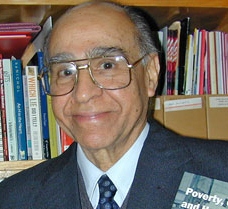
A.H. Somjee received his Ph.D. in Political Science from the London School of Economics. He is a charter member of the Simon Fraser University, Canada, where he is also an Emeritus Professor of Political Science. He has taught at the University of Baroda, the London School of Economics, University of Durham, and the National University of Singapore. He was also appointed as an Associate Fellow at the Queen Elizabeth House, Oxford University, and was invited to Harvard University, several times, as a Visiting Scholar.
When I was a faculty member of the M.S. University of Baroda (now Vadodara), from 1956 to 1964, I had heard the name of Dr. V. Kurien from various colleagues and people in surrounding villages.
The man in charge of AMUL did seem to me to be worth meeting in Anand, which was then a small town, less than 30 miles from Baroda. I worked with my students in surrounding villages, one of which is Boriavi, hardly a few kilometres from Anand, but still I could not meet him, despite my great desire to do so.
In 1964, I left India to teach in Durham University in Britain, and in 1965, I joined Simon Fraser University in Vancouver. In Vancouver, I was very keen to find out how the villages of free India were shaping up. In 1968-69, I got an official opportunity to travel to India. I selected Anand for my study and landed there.